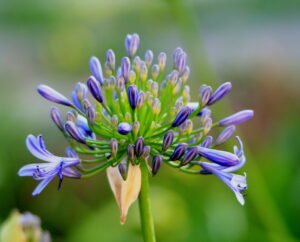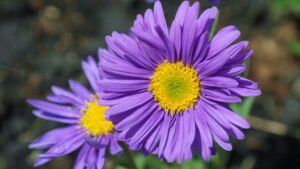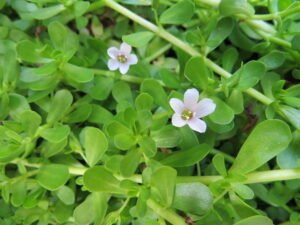How To Grow And Care For Coneflower

Coneflower plant care
Coneflowers are native to North America and are a member of the daisy family. They are known for their striking and vibrant flowers, which come in a variety of colors including pink, purple, white, and orange. One of the most popular varieties is the purple coneflower (Echinacea purpurea), which features large, daisy-like flowers with a cone-shaped center. This article explains in detail how to grow and care for Coneflower.

One of the reasons why coneflowers are so popular is because they are incredibly easy to grow. They are tolerant of a wide range of soil conditions and can thrive in both full sun and partial shade. This makes them a versatile choice for any garden or landscape.
Facts About Coneflower
One fascinating fact about coneflowers is their ability to attract pollinators. The vibrant colors and unique shape of their petals make them irresistible to bees, butterflies, and hummingbirds. These pollinators play a crucial role in the ecosystem by transferring pollen from one flower to another, which allows for the fertilization and reproduction of plants. By planting coneflowers in your garden, you are not only adding beauty to your landscape but also providing a valuable food source for these important pollinators.
Coneflowers are generally considered deer-resistant. They have a natural deterrent in their foliage and are not a preferred food source for deer. However, it’s important to note that deer preferences can vary, and in times of extreme hunger, they may still nibble on Coneflowers.
Another interesting fact about coneflowers is their medicinal properties. For centuries, Native Americans have used various parts of the coneflower plant for medicinal purposes. The roots were often used to make teas and tinctures to treat various ailments such as colds, flu, and infections. Today, coneflowers are still used in herbal medicine and are believed to have immune-boosting and anti-inflammatory properties. They are also commonly used in skincare products for their soothing and healing effects on the skin.
Coneflowers are also incredibly resilient and can thrive in a wide range of conditions. They are native to North America and are well-adapted to withstand harsh weather conditions, including drought and extreme temperatures. This makes them an excellent choice for gardeners who are looking for low-maintenance plants that can withstand the challenges of different climates. Whether you live in a hot and dry desert or a cold and snowy region, coneflowers can be a reliable and beautiful addition to your garden.
Furthermore, coneflowers are known for their long blooming period. Unlike many other flowers that only bloom for a short period, coneflowers can bloom from early summer all the way to fall. This extended blooming period provides a continuous source of nectar for pollinators, ensuring that they have a reliable food source throughout the season. It also means that you can enjoy the vibrant colors and beauty of coneflowers in your garden for a longer period.
How To Grow Coneflower From Seeds
Before you begin, it’s important to choose the right coneflower seeds. There are several different varieties available, each with its own unique color and growth habits. Some popular varieties include the Purple Coneflower (Echinacea purpurea), the Yellow Coneflower (Echinacea paradoxa), and the Pale Purple Coneflower (Echinacea pallida).
Once you have chosen your desired coneflower seeds, it’s time to prepare the soil. Coneflowers prefer well-drained soil that is rich in organic matter. Use a garden fork or tiller to soften the soil and get rid of any weeds or debris before planting the seeds. If the soil is heavy or clay-like, consider adding some compost or sand to improve drainage.
Next, sow the coneflower seeds directly into the prepared soil. The ideal time to sow the seeds is in early spring, after the danger of frost has passed. Scatter the seeds evenly over the soil surface, and then lightly press them into the soil. Avoid burying the seeds too deep, as they need light to germinate.
After sowing the seeds, water the area gently to settle the soil and provide moisture for germination. It is important to keep the soil constantly moist but not soggy because too much moisture might cause rotting. You may need to water the area regularly, especially during dry spells or hot weather.
Germination typically takes around two to three weeks, but it can vary depending on the specific variety and growing conditions. If the seedlings are too close together when they first appear, thin them out. This will allow the remaining seedlings to have enough space to grow and develop properly.
As the coneflower seedlings grow, provide them with regular care and maintenance.
How To Care For Coneflower
Choosing the Right Location
When it comes to growing coneflowers, choosing the right location is crucial. Coneflowers thrive in full sun, so it is important to select a spot in your garden that receives at least 6-8 hours of direct sunlight each day. They can tolerate some shade, but too much shade can result in weak and leggy plants with fewer blooms.
In addition to sunlight, coneflowers also prefer well-drained soil. They can tolerate a variety of soil types, including clay, loam, and sandy soil, as long as it is well-drained. If your soil tends to hold water, you can improve drainage by adding organic matter, such as compost or peat moss, to the soil.
Another factor to consider when choosing the right location for coneflowers is the climate. These plants are native to North America and are well-adapted to a wide range of climates. However, they tend to thrive in regions with moderate temperatures and average rainfall. If you live in an area with extreme heat or prolonged periods of drought, you may need to provide extra care and attention to ensure the health and vitality of your coneflowers.
Furthermore, it is important to consider the overall aesthetics of your garden when selecting the location for coneflowers. These plants have a tall and upright growth habit, reaching heights of 2 to 5 feet, depending on the variety. They also produce vibrant and colorful flowers that attract pollinators like bees and butterflies. Therefore, it is best to plant them in areas where they can be showcased and appreciated, such as along the borders of your garden or in flower beds near patios or walkways.
Lastly, it is worth mentioning that coneflowers can also be grown successfully in containers. This is a great option for those with limited garden space or for those who want to add a touch of color to their patios or balconies. When growing coneflowers in containers, make sure to choose a large enough pot that provides ample room for the roots to grow. Use a high-quality potting mix that is well-draining and water the plants regularly to keep the soil moist but not waterlogged.
In conclusion, selecting the right location for your coneflowers involves considering factors such as sunlight, soil drainage, climate, and aesthetic appeal. By providing these plants with the ideal growing conditions, you can ensure their health and longevity, and enjoy their beautiful blooms for years to come.
Watering and Fertilizing
Coneflowers are relatively drought-tolerant once established, but they still require regular watering, especially during dry periods. Water your coneflowers deeply once a week, providing about 1 inch of water. This will help encourage deep root growth and ensure that the plants are adequately hydrated.
It is important to note that coneflowers do not require heavy fertilization. In fact, too much fertilizer can cause the plants to become leggy and produce fewer blooms. A light application of balanced fertilizer in early spring, just as new growth emerges, is usually sufficient. Alternatively, you can amend the soil with compost or well-rotted manure before planting to provide the plants with the necessary nutrients.
Mulching
After watering, apply a layer of mulch around the base of the coneflower plant. Mulch helps to retain moisture in the soil, suppresses weed growth, and insulates the roots from extreme temperatures. Use organic mulch, such as wood chips or straw, and spread it evenly around the plant, leaving a small gap around the stem to prevent rot.
Provide Support (if necessary)
Some varieties of coneflowers, especially the taller ones, may require support to prevent them from flopping over. If your coneflower plant is prone to leaning or bending, insert a plant stake or support cage near the base of the plant. Gently tie the stems to the support using soft plant ties or twine, being careful not to constrict the growth of the plant.
Pruning and Deadheading
Pruning and deadheading coneflowers can help promote continuous blooming and keep the plants looking tidy. Here are a few tips:
Pruning
In late winter or early spring, before new growth appears, it is important to prune coneflowers to ensure their health and vitality. By cutting back the old stems to a height of 6-8 inches above the ground, you are effectively removing any diseased or damaged parts of the plant. This not only helps rejuvenate the plants but also encourages strong, healthy growth. Additionally, pruning at this time allows for better air circulation and sunlight penetration, which can reduce the risk of fungal diseases.
When pruning, it is essential to use sharp and clean tools to prevent the spread of diseases. Make clean cuts at a slight angle just above a leaf node or bud to encourage new growth. Remove any weak or overcrowded stems to promote a more open and balanced plant structure. It is important to note that coneflowers have a natural tendency to self-seed, so if you want to prevent them from spreading too much, be sure to remove any flower heads before they have a chance to develop seeds.
Deadheading
Deadheading, or removing spent flowers, is another crucial step in maintaining the beauty and longevity of coneflowers. By snipping off the faded blooms with a pair of garden shears or scissors, you are not only tidying up the plant but also preventing it from going to seed. This redirects the plant’s energy into producing more flowers rather than focusing on seed production. Regular deadheading throughout the blooming season can help prolong the flowering period and encourage the development of new buds.
When deadheading, it is important to remove the entire flower head, including the stem, to prevent any potential disease or pest infestation. Be sure to dispose of the removed flower heads properly to avoid any accidental reseeding. If you prefer to leave some flower heads intact for their aesthetic appeal or to provide food for birds, you can selectively deadhead only a portion of the plant.
Overall, pruning and deadheading are essential practices for coneflower care. Your coneflowers will stay healthy, colorful, and blooming all during the growing season if you only follow these easy guidelines.
Pest and Disease Control
Coneflowers are generally resistant to most pests and diseases, but they can occasionally be affected by certain issues. Here are some typical issues and solutions for them:
Powdery Mildew
Powdery mildew is a fungal disease that can affect coneflowers, causing a white, powdery coating on the leaves. Make sure to give plants enough space from one another to allow for proper air circulation in order to avoid powdery mildew. If powdery mildew does occur, you can treat it with a fungicide or a homemade solution of water and baking soda.
Aphids
Aphids are small, soft-bodied insects that can cluster on the leaves and stems of coneflowers, sucking out the sap and causing the leaves to curl and distort. To control aphids, you can spray the plants with a strong jet of water to dislodge them or use insecticidal soap.
Slugs and Snails
Slugs and snails can feed on the leaves of coneflowers, leaving behind large holes and ragged edges. To deter these pests, you can set up beer traps or sprinkle diatomaceous earth around the plants. You can also handpick and remove them from the garden.
Japanese Beetles
Another common pest that can affect coneflowers is the Japanese beetle. These metallic green beetles can skeletonize the leaves, leaving only the veins behind. To control Japanese beetles, you can handpick them off the plants or use traps specifically designed for them. Applying a layer of insecticidal soap or neem oil can also help deter these pests.
Root Rot
Root rot is a fungal disease that can affect coneflowers, especially in poorly drained soil. It can cause the roots to become mushy and discolored, leading to wilting and eventually death of the plant. To prevent root rot, make sure to plant coneflowers in well-draining soil and avoid overwatering. If root rot does occur, you may need to remove and replace the affected plants.
Deer and Rabbits
Deer and rabbits are known to feed on coneflowers, especially in areas where they are abundant. To protect your coneflowers from these animals, you can install fencing around your garden or use repellents that are specifically designed for deer and rabbits. Planting companion plants that are less appealing to these animals can also help deter them from your coneflowers.
By being aware of these common pests and diseases and taking proactive measures to prevent and control them, you can ensure the health and beauty of your coneflowers in your garden.
Dividing and Propagating Coneflowers
Over time, coneflowers can become crowded and start to decline in vigor. Dividing the plants every 3-4 years can help rejuvenate them and promote healthier growth. Here’s how to divide coneflowers:
Step 1: Dig up the Plant
In early spring or fall, dig up the entire clump of coneflowers using a garden fork or shovel. Be careful not to damage the roots. The best time to divide coneflowers is in early spring when new growth is just beginning to emerge. This will give the divided plants enough time to establish their root systems before the heat of summer.
Step 2: Separate the Clumps
Once the plant is out of the ground, gently separate the clumps into smaller sections. There should be a few stems and a healthy root system in each part. If the clumps are too large to handle, you can use a sharp knife or garden shears to divide them. Make sure to clean your tools with a disinfectant before and after dividing the plants to prevent the spread of diseases.
Step 3: Replant
Replant the divided sections in a new location or share them with friends and family. Ensure that you plant them at the same depth as when they were growing. Coneflowers prefer well-draining soil and full sun, so choose a location that meets these requirements. To increase the soil’s fertility and drainage, treat it with compost or other organic matter before planting.
Water the newly planted divisions thoroughly and keep the soil moist but not waterlogged. Mulching around the plants will help conserve moisture and suppress weed growth. It’s important to monitor the divided coneflowers closely during the first few weeks to ensure they are establishing well. If any signs of stress or wilting occur, provide additional water and shade until they recover.
By dividing and propagating coneflowers, you can not only rejuvenate the plants but also expand your garden or share the beauty of these flowers with others. Remember to label the newly planted divisions if you are experimenting with different varieties or colors. With proper care and maintenance, your coneflowers will continue to thrive and bring joy to your garden for years to come.





